|
Displaying items by tag: edouard manet
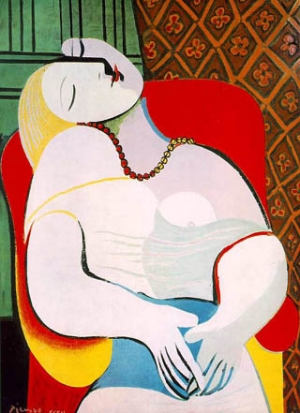
Steven Cohen, an American hedge fund manager and founder of SAC Capital Advisors LP, purchased Pablo Picasso’s (1881-1973) La Reve (1932) from casino tycoon Steve Wynn for $155 million. The sale marks the highest price paid by a U.S. collector for an artwork.
Cohen and Wynn have been in discussion about the sale since 2006. Originally, Wynn agreed to sell the painting to Cohen for $139 million but the transaction was cancelled after Wynn, whose vision is compromised, put his elbow through the canvas. The work has since been restored and the repair was factored into the selling price.
The sale comes less than two weeks after SAC Capital settled an ongoing insider trading case with the U.S. Securities and Exchange Commission for $600 million; it was the largest insider trading settlement in history. Cohen, who started collecting art in 2001, has an expansive collection that includes works by Vincent van Gogh (1853-1890), Edouard Manet (1832-1883), Willem de Kooning (1904-1997), Paul Cézanne (1839-1906), Andy Warhol (1928-1987), Jasper Johns (b. 1930), and Gerhard Richter (b. 1932).
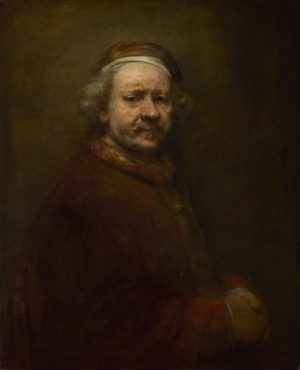
London’s National Gallery announced that they will send three cherished works from their collection on a tour of galleries and museums around the country between 2014 and 2016. Édouard Manet’s (1832-1883) The Execution of Maximilian (circa 1867-8), Canaletto’s (1697-1768) A Regatta on the Grand Canal (circa 1740), and Rembrandt’s (1606-1669) Self Portrait at the Age of 63 will comprise the traveling exhibition titled The Masterpiece Tour (1669).
Officials at the National Gallery hope that The Masterpiece Tour will promote understanding, knowledge, and appreciation of Old Master paintings to a wider audience. Christie’s is assisting the museum with the endeavor and will send one masterpiece on tour per year. Each annual tour will run from January to July and visit three different regional museums, spending approximately six weeks in each venue.
The first painting to go on tour in 2014 will be Manet’s masterpiece depicting Austrian Archduke Ferdinand Maximilian’s deadly capture by Mexican forces. The work was cut up after the artist’s death and the fragments were eventually purchased by Edgar Degas (1834-1917) and reassembled on a single canvas. The painting has been a part of the National Gallery’s collection since 1918.
Canaletto’s painting of the annual carnival regatta in Venice will tour during 2015 and Rembrandt’s self-portrait, which was painted during the final year of the artist’s life, will go on tour in 2016. The poignant work has been on display at the National Gallery since 1851.

French president Francois Hollande has given special allowance to Édouard Manet’s (1832-1883) Olympia (1863), permitting the masterpiece to travel from Paris to Venice for an exhibition. It will be the first time the influential painting has left the French city since it was given to the nation in 1890. Olympia, which features a nude woman and her fully clothed maid, shocked audiences with its subject’s provocative gaze and the suggestion that she was a prostitute.
Olympia, which is part of the Musée d’Orsay’s collection, will travel to Italy to anchor an exhibition at the Doge’s Palace in Venice. The painting will appear alongside Titian’s (1485-1576) The Venus of Urbino (1538), which is on loan from Florence’s Uffizi Gallery, as part of the exhibition Manet: Return to Venice. The exhibition features 70 works including 42 paintings by Manet on loan from the Musée d’Orsay, which will received a considerable amount in fees for the unprecedented loan. A number of paintings will also be on loan from the Metropolitan Museum of Art in New York.
Manet: Return to Venice will explore how Italian artists such as Vittore Carpaccio (1460-1520), Antonello da Messina (1430-1479), and Lorenzo Lotto (1480-1556) influenced the French painter. The exhibition will be on view from April 25 to August 4, 2013.

Impressionism, Fashion and Modernity, which will open at the Metropolitan Museum of Art in New York on February 26, 2013, will present Impressionist masterpieces alongside garments and accessories from the time. The innovative survey will explore how artists responded to and interpreted fashion from the 1860s through the mid-1880s.
The exhibition, which features 79 paintings and 14 dresses, draws stylistic connections between the canvases and the garments. Highlights include Claude Monet’s (1840-1926) Luncheon on the Grass (1865-66), Pierre-Auguste Renoir’s (1941-1919) Lise-The Woman with the Umbrella (1867), Édouard Manet’s (1832-1883) La Parisienne (circa 1875), Edgar Degas’ (1834-1917) The Millinery Shop (circa 1882-86), and Mary Cassatt’s (1844-1926) In the Loge (1878). Many of the works are on loan from museums such as the Paris’ Musée d’Orsay, the Art Institute of Chicago, London’s Courtauld Gallery, and the Museum of Fine Arts, Boston. The exhibition also includes period photographs and illustrations to reinforce the connection between fashion and art.
Impressionism, Fashion, and Modernity will be on view at the Met through May 27, 2013. The exhibition will travel to the Art Institute of Chicago in June 2013.
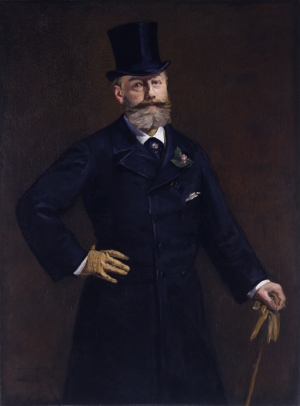
Manet: Portraying Life opens on January 26, 2013 at the Royal Academy of Arts in London. The first exhibition to focus solely on French Impressionist Edouard Manet’s (1832-1883) portraits, Portraying Life has already sold more advanced tickets than the museum’s blockbuster Vincent van Gogh (1853-1890) exhibition in 2010. Certain timed ticket entrances have sold out entirely.
The show, which took six years to organize, spans Manet’s entire career and features works from Europe, Asia, and the United States. Portraying Life is comprised of 50 paintings and a few pastels and includes portraits of Manet’s favorite sitters such as his wife, Suzanne Leenhoff (1829-1906), and luminaries from the time period including Antonin Proust (1832-1905) and Émile Zola (1840-1902). Manet, who often painted family, friends, and important political as well as artistic figures, invigorated scenes of everyday life with his modern and progressive approach to portraiture.
While Portraying Manet is expected to be a hit show, there has been a hiccup in plans. London’s snowy weather has left one painting stranded in Brazil’s São Paulo airport; the portrait of Mademoiselle Marie Lefébure is awaiting flight clearance before it can be exhibited at the Royal Academy. Sadly, the painting was not present at the press preview on January 22, 2013, which included VIP guests, patrons, and sponsors. Officials hope the work will arrive in time for exhibition’s public opening on Saturday.
Manet: Portraying Life will be on view through April 14, 2013.

While hedge-fund owner, Steven A. Cohen, is embroiled in a financial fiasco, the art world is anxiously waiting to see what will become of his impressive art collection. The U.S. Securities and Exchange Commission has informed Cohen that his $14 billion company, SAC Capital Advisors LP, could be at the center of an insider-trading lawsuit. The SEC is currently suing SAC Capital’s former portfolio manager, Mathew Martoma.
Cohen, who is worth $9.5 billion, started building his collection around 2001 and is now regarded as one of the biggest and most influential art collectors. Once a major buyer of Impressionist works, Cohen began collecting more contemporary pieces and helped raise prices of big-name artists like Damien Hirst, whose shark in formaldehyde, titled The Physical Impossibility of Death in the Mind of Someone Living, he bought for $8 million.
Cohen’s collection also includes works by Vincent van Gogh, Edouard Manet, Willem de Kooning, Pablo Picasso, Paul Cezanne, Andy Warhol, Francis Bacon, and Jasper Johns. If Cohen’s troubles worsen, he may be forced to dismantle his carefully assembled collection and begin selling his artworks.
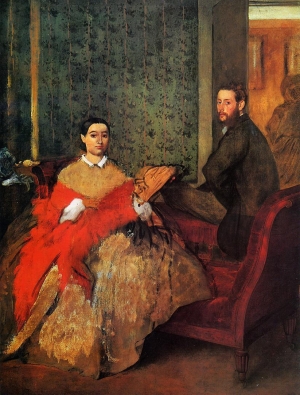
Patrons who are familiar with the permanent collection at Boston’s Museum of Fine Arts might become befuddled upon their next visit to the institution. Some of the museum’s finest works including Pierre-Auguste Renoir’s Dance at Bougival, the pivotal Claude Monet painting, La Japonaise: Camille Monet in a Japanese Costume, five works by Paul Cézanne, five more by Edouard Manet, and two of the masterpieces by Vincent Van Gogh are nowhere to be found.
While some of the works have been lent to museums in the United States, Japan, and Europe to enhance exhibitions, others have been rented to for-profit organizations. Loans between institutions are common practice, but compounded with the large number of works currently out on rent by the MFA, the museum’s own collection appears to be lacking. Currently, 26 of the MFA’s paintings are involved in exhibitions in Italy, which the institution received a hefty yet undisclosed fee for. Some of the works now on view in Italy are two paintings by John Singleton Copley and two Rembrandt portraits as well as single works by Eugène Delacroix, Paolo Veronese, Winslow Homer, John Singer Sargent, Paul Gauguin, Alberto Giacometti, and Pablo Picasso.
While the MFA is excited to be raising revenues, the act of charging fees for lending works has been a source of controversy. One of the main duties of public institutions, including art museums, is to share their collections with the public. Many objectors find the practice of lending works for profit to be in direct opposition to this goal.
Other major holdings that are not presently at the MFA are Diego Velázquez’s Luis de Gongora, two works by El Greco, two more by Gustave Courbet, the museum’s only painting by Edvard Munch, and arguably its greatest work by Edgar Degas, Edmondo and Therese Morbilli. While MFA officials argue that they are bolstering the museum’s international reputation, critics feel the institution is suffering for it.
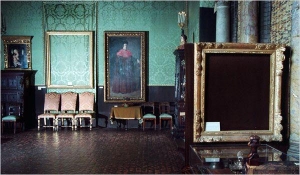
In March of 1990, two thieves posing as Boston police officers entered the Isabella Stewart Gardner Museum and stole thirteen works of art including masterpieces by Vermeer, Rembrandt, Edgar Degas, and Edouard Manet. Now known as the greatest art heist in history, the case has remained unresolved despite the countless hours of investigating the FBI has conducted. While the Bureau has offered immunity to anyone who assisted in the recovery of the artworks, they have never received a concrete lead.
While it would appear that the reputed organized crime figure, Robert V. Gentile, who found himself in federal court this Wednesday on drug trafficking and gun possession was irrelevant to the Gardner case, the FBI believed Gentile had vital information to share. Gentile, 76, of Manchester, Connecticut, helped federal authorities for 10 months prior to his arrest but none of the information was useful in tracking down the thieves. Gentile’s lawyer claims that his client did know some of the individuals the government believed were involved in the heist, but that most of them were dead by now. Gentile now faces a maximum of 150 years in prison if he is convicted. The government is willing to negotiate his sentence so that his prison term will be reduced to 46-57 months.
Gentile became involved in the Gardner case when Elene Guarente, the widow of Robert Guarente, a mob associated who died in 2005, told investigators that her husband gave Gentile a painting that he had kept in a tube since the 1990s.
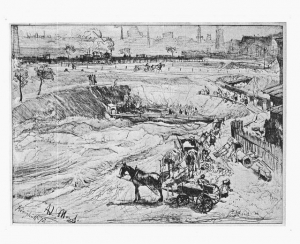
The great-granddaughters of the German-Jewish painter Max Liebermann are growing impatient with Berlin museum authorities about two drawings from his collection they say were lost as a result of Nazi persecution.
The drawings by Adolph Menzel in the Kupferstichkabinett in Berlin are among thousands of works that Liebermann’s heirs are trying to recover. Liebermann was not only one of the most famous German Impressionists; he was also a great collector. Works by Edouard Manet, Edgar Degas, Claude Monet and Auguste Renoir adorned his imposing home next to the Brandenburg Gate.
Forced to resign as honorary president of the Prussian Academy of Arts after the Nazis took power, Liebermann died isolated and embittered in 1935, leaving his estate to his widow. She sold some artworks to pay the rent and buy food and medicine before committing suicide in 1943.
“For the heirs, it’s difficult to understand why public institutions are so hesitant,” said Georg Castell of Heinichen Laudien von Nottbeck Rechtsanwaelte in Berlin, the lawyer representing the great-granddaughters. “Without cooperation from the museums, we can’t get very far.”
|
|
|
|
|